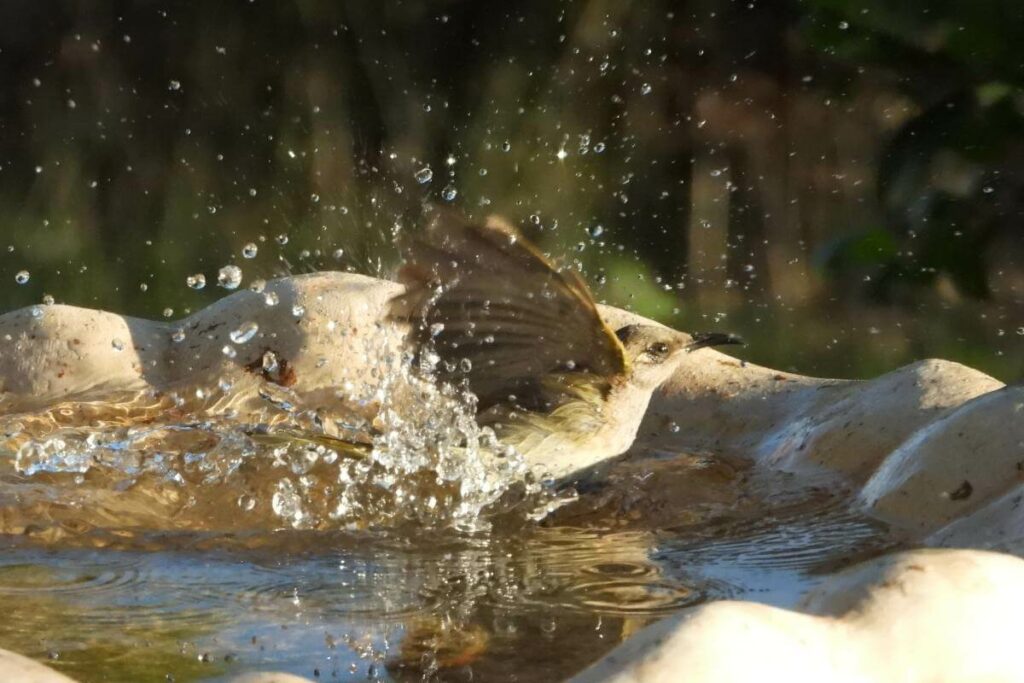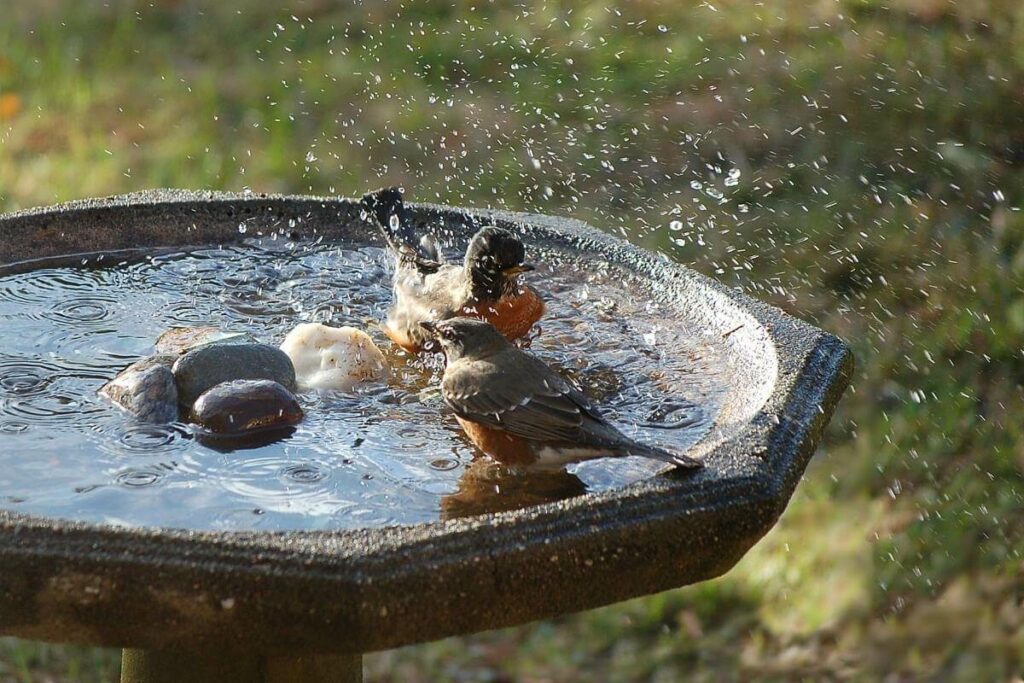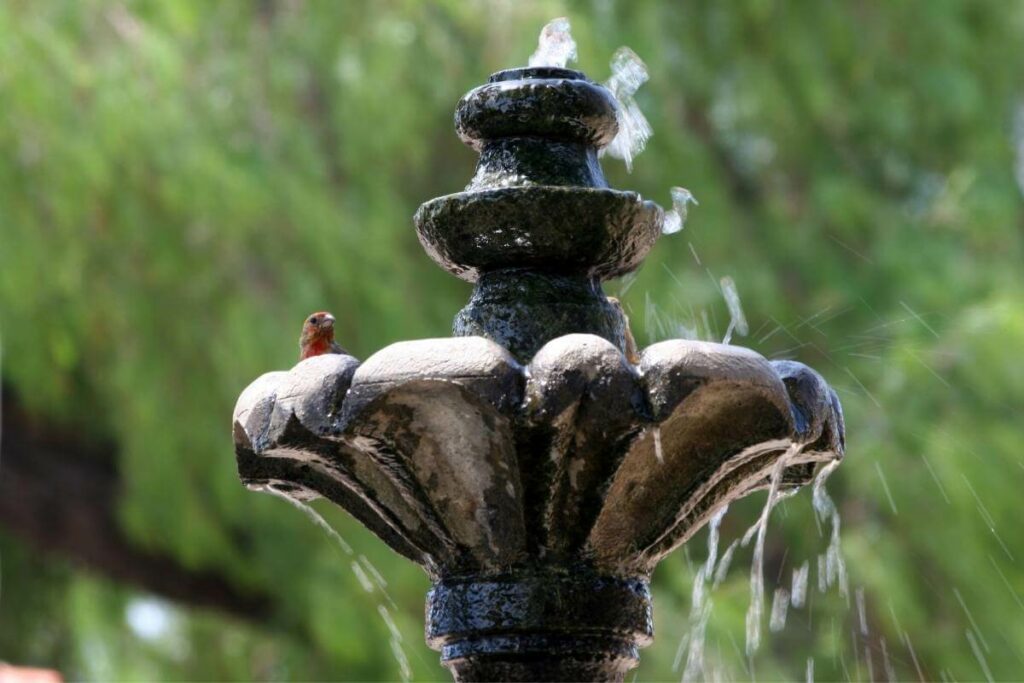If you fill a birdbath too deep, some birds can indeed drown in the water.
This goes primarily for birds that are very young, injured, or sick.
While it’s not extremely common, it’s obviously not something any bird lover would want to risk.
Fortunately: There are some simple ways that you can ensure your birdbath is safe for birds of all ages and sizes to use. All that you need is a bit of know-how!
Can Birds Drown in a Birdbath?

While it’s not especially common, birds can, in fact, drown in a birdbath. In these cases, they are often weaker than birds usually are, because they are young or sick. In fact, baby birds drowning in birdbaths is probably the greatest risk.
Fortunately, you can avoid this tragic outcome with just a bit of know-how!
Most birds are not excellent swimmers, which is why you don’t see them in ponds among ducks and swans.
Their feet don’t have webbing and will need to be able to reach the bottom so they don’t sink.
This means that a shallow birdbath is called for!
How Deep Should a Bird Bath Water Be?
So, how deep should a birdbath be, then?
1-3 inches is typically an acceptable, safe depth for birdbath water. This will ensure that both the biggest and the smallest birds can bathe, with no drowning risk.
There are also other steps that you can take to make your birdbath safer!
What Do You Do If You’ve Filled a Bird Bath Too Deep?

If you’re concerned that your birdbath is too deep, there are some ways that you can easily make it shallower and therefore safer!
Rocks
Rocks are probably the best way to improve a birdbath that’s too deep.
Find stones that are tall enough to make the water just 1-3 inches deep, yet flat enough for birds to stand on comfortably.
They should also be rough enough that they can get a grip and not slip into the water.
Finally: Make sure not to leave any pitfalls between the rocks for small or young birds to fall into; an overall even surface is far better!
Sticks
Sticks can also be excellent when it comes to making a birdbath more accessible.
Simply find some thick, sturdy ones and secure them in place across the bowl. This will give the birds something to stand on, should they feel overwhelmed by the water.
When it comes to creating a drown-proof birdbath for your feathered friends, a combination of properly arranged rocks and sticks should do the trick!
How Far Should a Bird Bath Be from a Bird Feeder?
Having a birdbath right next to a bird feeder isn’t strictly necessary.
This being said, it can be helpful when it comes to helping birds find the birdbath.
The most important thing is that the birdbath is hidden from the view of any predator!
3 Other Ways That You Can Provide Wild Birds with Clean Water

Along with a birdbath, there are ways that you can specifically provide bird visitors with precious, clean drinking and bathing water. Here are the best options.
1 – A Fountain or Waterfall
When it comes to hydrating your bird friends, the only thing better than a birdbath is moving water.
Moving water naturally stays more oxygenated. It also helps prevent the growth of algae and harmful bacteria, thereby keeping the water cleaner.
This means that:
- You won’t have to scrub it as often and
- Your birds will have fresher water.
A fountain or waterfall are particularly good ways to keep water filtering and undesirable growths in check.
2- A Mister
Many birds enjoy a good spritz of water (on their terms, of course).
You can provide them with this relief with their very own mister. Simply place one near a bird feeder (but not close enough to get it wet).
It’s also helpful to shelter the mister and keep it out of view of any potential predator!
3- A Creek
If you like the idea of having a creek in your yard, yet another benefit is that it will provide your bird friends with flowing, clean water.
Don’t Forget: Just make sure to provide stands and rock perches, so that they have secure places to bathe and drink.
In Summary
So, if you’re worried you’ve filled your bird bath too deep, there’s your answer.
While most birds will be smart enough to avoid deep water, there are those that will still drown. Namely, birds that are injured, weak, or sick.
To address this, look for a birdbath that’s suitably shallow, fill it no more than 1-3 inches, and/or make sure to provide rocks and sticks that are above the water!
Also Useful
- How Do You Get a Baby Bird to Open Its Mouth?
- How Close Can Birdboxes Be?
- Will Birds Starve If I Stop Feeding Them?
